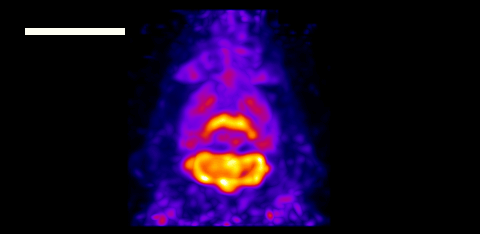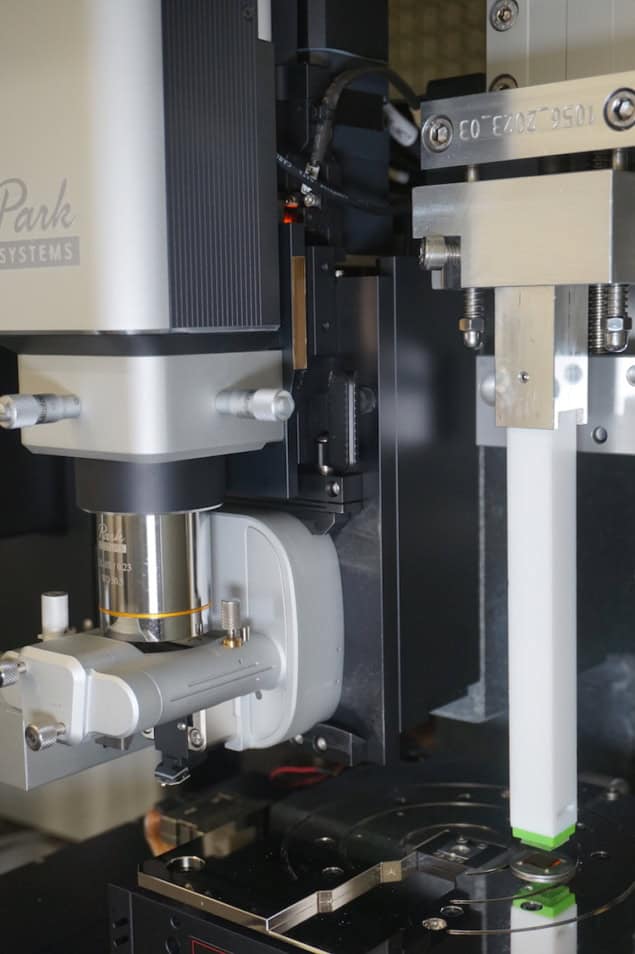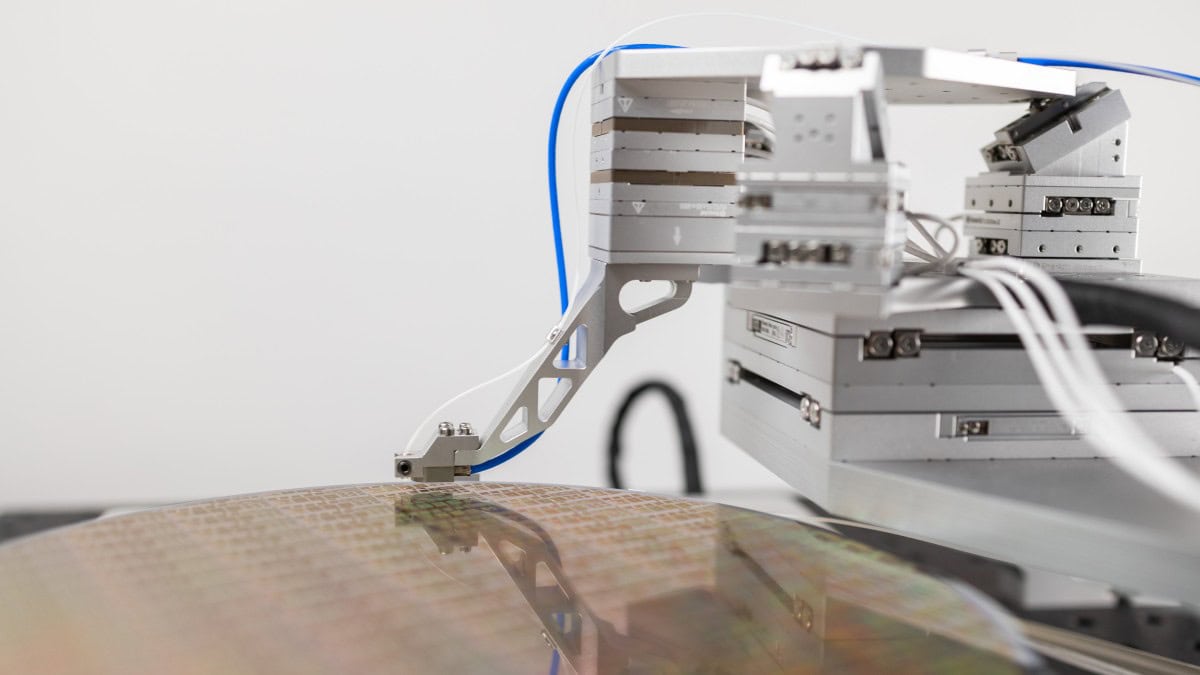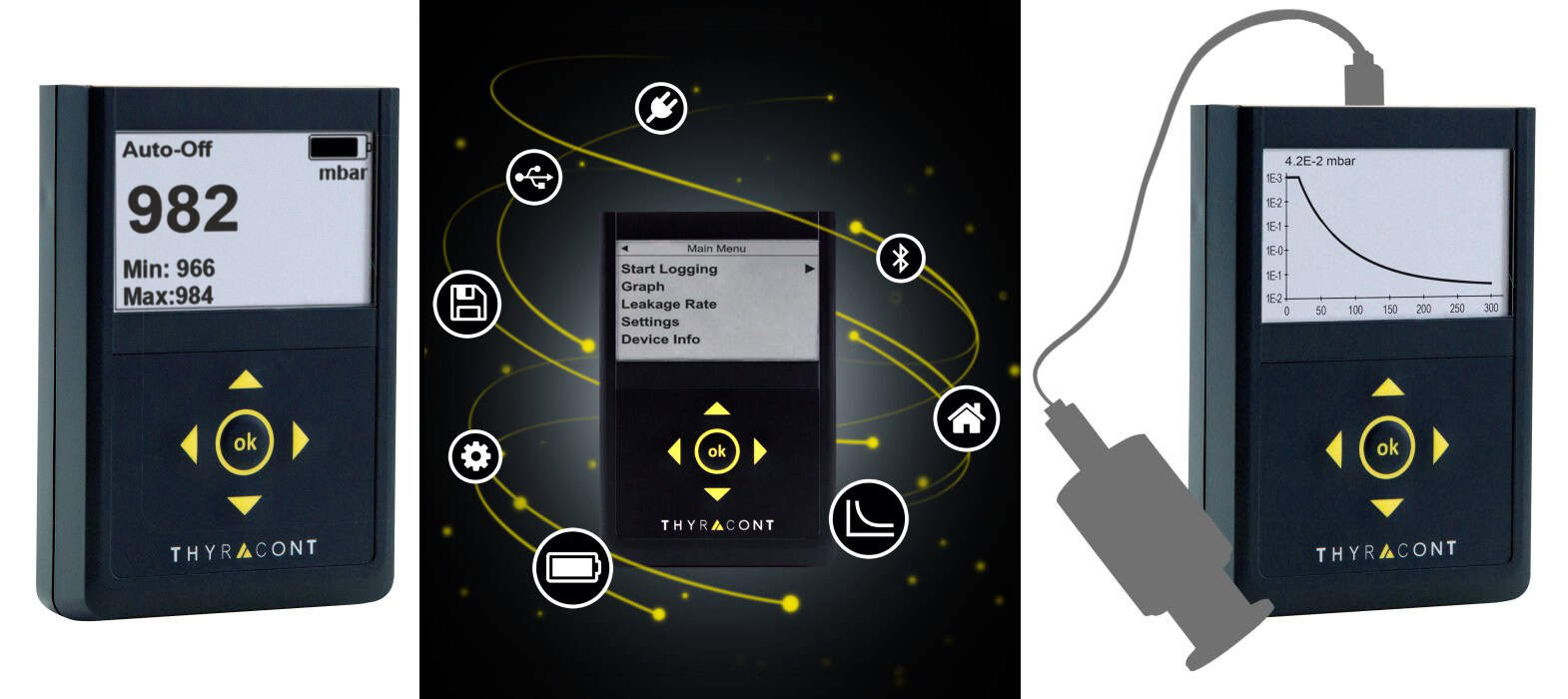The Crocodile’s First Fierce Relative Stalked Earth 240 Million Years Ago



Simi Valley, CA — [November 13, 2025] — ESI Motion, a leader in advanced motion and power solutions, proudly announces the release of its next-generation space-rated satellite battery, SatBat, engineered […]
The post ESI Motion Launches “SatBat,” a Revolutionary Space-Rated Battery Set to Redefine Power Systems in Low Earth Orbit appeared first on SpaceNews.
Like any major endeavour, designing and fabricating semiconductor chips requires compromise. As well as trade-offs between cost and performance, designers also consider carbon emissions and other environmental impacts.
In this episode of the Physics World Weekly podcast, Margaret Harris reports from the Heidelberg Laureate Forum where she spoke to two researchers who are focused on some of these design challenges.
Up first is Mariam Elgamal, who’s doing a PhD at Harvard University on the development of environmentally sustainable computing systems. She explains why sustainability goes well beyond energy efficiency and must consider the manufacturing process and the chemicals used therein.
Harris also chats with Andrew Gunter, who is doing a PhD at the University of British Columbia on circuit design for computer chips. He talks about the maths-related problems that must be solved in order to translate a desired functionality into a chip that can be fabricated.
The post Designing better semiconductor chips: NP hard problems and forever chemicals appeared first on Physics World.

The Middle East is no longer asking whether it should develop domestic space capabilities; it’s deciding with whom it will develop them. If the United States wants to be the country of choice ahead of China, it must create a joint space partnership agreement framework to align American and partner nations’ industry, government and financial […]
The post Countering China’s Space Silk Road: a U.S. partnership model for the Middle East appeared first on SpaceNews.

In this episode of Space Minds, host David Ariosto speaks with Jim Bridenstine, former NASA Administrator and U.S. Congressman, who oversaw the launch of the Artemis program—America’s renewed effort to return astronauts to the Moon.
The post Keeping America first in space appeared first on SpaceNews.

Lux Aeterna is attracting growing interest from across the U.S. government for heat shield technology designed to make satellites fully reusable, securing two partnership agreements since emerging from stealth in June.
The post Lux Aeterna nets US government partnerships for reusable satellite technology appeared first on SpaceNews.
Positron emission tomography (PET) is used extensively within preclinical research, enabling molecular imaging of rodent brains, for example, to investigate neurodegenerative disease. Such imaging studies require the highest possible spatial resolution to resolve the tiny structures in the animal’s brain. A research team at the National Institutes for Quantum Science and Technology (QST) in Japan has now developed the first PET scanner to achieve sub-0.5 mm spatial resolution.
Submillimetre-resolution PET has been demonstrated by several research groups. Indeed, the QST team previously built a PET scanner with 0.55 mm resolution – sufficient to visualize the thalamus and hypothalamus in the mouse brain. But identification of smaller structures such as the amygdala and cerebellar nuclei has remained a challenge.
“Sub-0.5 mm resolution is important to visualize mouse brain structures with high quantification accuracy,” explains first author Han Gyu Kang. “Moreover, this research work will change our perspective about the fundamental limit of PET resolution, which had been regarded to be around 0.5 mm due to the positron range of [the radioisotope] fluorine-18”.
With Monte Carlo simulations revealing that sub-0.5 mm resolution could be achievable with optimal detector parameters and system geometry, Kang and colleagues performed a series of modifications to their submillimetre-resolution PET (SR-PET) to create the new high-resolution PET (HR-PET) scanner.
The HR-PET, described in IEEE Transactions on Medical Imaging, is based around two 48 mm-diameter detector rings with an axial coverage of 23.4 mm. Each ring contains 16 depth-of-interaction (DOI) detectors (essential to minimize parallax error in a small ring diameter) made from three layers of LYSO crystal arrays stacked in a staggered configuration, with the outer layer coupled to a silicon photomultiplier (SiPM) array.
Compared with their previous design, the researchers reduced the detector ring diameter from 52.5 to 48 mm, which served to improve geometrical efficiency and minimize the noncollinearity effect. They also reduced the crystal pitch from 1.0 to 0.8 mm and the SiPM pitch from 3.2 to 2.4 mm, improving the spatial resolution and crystal decoding accuracy, respectively.
Other changes included optimizing the crystal thicknesses to 3, 3 and 5 mm for the first, second and third arrays, as well as use of a narrow energy window (440–560 keV) to reduce the scatter fraction and inter-crystal scattering events. “The optimized staggered three-layer crystal array design is also a key factor to enhance the spatial resolution by improving the spatial sampling accuracy and DOI resolution compared with the previous SR-PET,” Kang points out.
Performance tests showed that the HR-PET scanner had a system-level energy resolution of 18.6% and a coincidence timing resolution of 8.5 ns. Imaging a NEMA 22Na point source revealed a peak sensitivity at the axial centre of 0.65% for the 440–560 keV energy window and a radial resolution of 0.67±0.06 mm from the centre to 10 mm radial offset (using 2D filtered-back-projection reconstruction) – a 33% improvement over that achieved by the SR-PET.
To further evaluate the performance of the HR-PET, the researchers imaged a rod-based resolution phantom. Images reconstructed using a 3D ordered-subset-expectation-maximization (OSEM) algorithm clearly resolved all of the rods. This included the smallest rods with diameters of 0.5 and 0.45 mm, with average valley-to-peak ratios of 0.533 and 0.655, respectively – a 40% improvement over the SR-PET.
The researchers then used the HR-PET for in vivo mouse brain imaging. They injected 18F-FITM, a tracer used to image the central nervous system, into an awake mouse and performed a 30 min PET scan (with the animal anesthetized) 42 min after injection. For comparison, they scanned the same mouse for 30 min with a preclinical Inveon PET scanner.

After OSEM reconstruction, strong tracer uptake in the thalamus, hypothalamus, cerebellar cortex and cerebellar nuclei was clearly visible in the coronal HR-PET images. A zoomed image distinguished the cerebellar nuclei and flocculus, while sagittal and axial images visualized the cortex and striatum. Images from the Inveon, however, could barely resolve these brain structures.
The team also imaged the animal’s glucose metabolism using the tracer 18F-FDG. A 30 min HR-PET scan clearly delineated glucose transporter expression in the cortex, thalamus, hypothalamus and cerebellar nuclei. Here again, the Inveon could hardly identify these small structures.
The researchers note that the 18F-FITM and 18F-FDG PET images matched well with the anatomy seen in a preclinical CT scan. “To the best of our knowledge, this is the first separate identification of the hypothalamus, amygdala and cerebellar nuclei of mouse brain,” they write.
Future plans for the HR-PET scanner, says Kang, include using it for research on neurodegenerative disorders, with tracers that bind to amyloid beta or tau protein. “In addition, we plan to extend the axial coverage over 50 mm to explore the whole body of mice with sub-0.5 mm resolution, especially for oncological research,” he says. “Finally, we would like to achieve sub-0.3 mm PET resolution with more optimized PET detector and system designs.”
The post High-resolution PET scanner visualizes mouse brain structures with unprecedented detail appeared first on Physics World.

GOLDEN, CO — The surge in megasatellite constellations is creating problems beyond amplifying the Earth-circling space debris, according to new research. Reentering spacecraft and rocket stages may also be damaging Earth’s atmosphere, as well as increasing the risk of space waste hitting the Earth. New research posted to the preprint database ArXiv finds that “space […]
The post ‘Uncontrolled experiment:’ Study links harmful atmospheric metals to spacecraft reentry appeared first on SpaceNews.


As the world prepares to return to the moon, much of the attention remains fixed on the visible frontier: the rockets, landers and orbital stations that will make it possible. Yet the success of this new era in exploration depends on something far less visible — the communications infrastructure that keeps those missions alive once […]
The post Ground truth: Why the lunar program needs its Earthbound network appeared first on SpaceNews.

Relativity Space, a launch startup developing a reusable rocket, has expanded a contract to provide launches for satellite operator SES.
The post SES expands launch contract with Relativity Space appeared first on SpaceNews.
Static electricity is an everyday phenomenon, but it remains poorly understood. Researchers at the Institute of Science and Technology Austria (ISTA) have now shed new light on it by capturing an “image” of charge distributions as charge transfers from one surface to another. Their conclusions challenge longstanding interpretations of previous experiments and enhance our understanding of how charge behaves on insulating surfaces.
Static electricity is also known as contact electrification because it occurs when charge is transferred from one object to another by touch. The most common laboratory example involves rubbing a balloon on someone’s head to make their hair stand on end. However, static electricity is also associated with many other activities, including coffee grinding, pollen transport and perhaps even the formation of rocky planets.
One of the most useful ways of studying contact electrification is to move a metal tip slowly over the surface of a sample without touching it, recording a voltage all the while. These so-called scanning Kelvin methods produce an “image” of voltages created by the transferred charge. At the macroscale, around 100 μm to 10 cm, the main method is termed scanning Kelvin probe microscopy (SKPM). At the nanoscale, around 10 nm to 100 μm, a related but distinct variant known as Kelvin probe force microscopy (KPFM) is used instead.
In previous fundamental physics studies using these techniques, the main challenges have been to make sense of the stationary patterns of charge left behind after contact electrification, and to investigate how these patterns evolve over space and time. In the latest work, the ISTA team chose to ask a slightly different question: when are the dynamics of charge transfer too fast for measured stationary patterns to yield meaningful information?
To find out, ISTA PhD student Felix Pertl built a special setup that could measure a sample’s surface charge with KPFM; transfer it below a linear actuator so that it could exchange charge when it contacted another material; and then transfer it underneath the KPFM again to image the resulting change in the surface charge.
“In a typical set-up, the sample transfer, moving the AFM to the right place and reinitiation and recalibration of the KPFM parameters can easily take as long as tens of minutes,” Pertl explains. “In our system, this happens in as little as around 30 s. As all aspects of the system are completely automated, we can repeat this process, and quickly, many times.”

This speed-up is important because static electricity dissipates relatively rapidly. In fact, the researchers found that the transferred charge disappeared from the sample’s surface quicker than the time required for most KPFM scans. Their data also revealed that the deposited charge was, in effect, uniformly distributed across the surface and that its dissipation depended on the material’s electrical conductivity. Additional mathematical modelling and subsequent experiments confirmed that the more insulating a material is, the slower it dissipates charge.
Pertl says that these results call into question the validity of some previous static electricity studies that used KPFM to study charge transfer. “The most influential paper in our field to date reported surface charge heterogeneity using KPFM,” he tells Physics World. At first, the ISTA team’s goal was to understand the origin of this heterogeneity. But when their own experiments showed an essentially homogenous distribution of surface charge, the researchers had to change tack.
“The biggest challenge in our work was realizing – and then accepting – that we could not reproduce the results from this previous study,” Pertl says. “Convincing both my principal investigator and myself that our data revealed a very different physical mechanism required patience, persistence and trust in our experimental approach.”
The discrepancy, he adds, implies that the surface heterogeneity previously observed was likely not a feature of static electricity, as was claimed. Instead, he says, it was probably “an artefact of the inability to image the charge before it had left the sample surface”.
Studies of contact electrification studies go back a long way. Philippe Molinié of France’s GeePs Laboratory, who was not involved in this work, notes that the first experiments were performed by the English scientist William Gilbert clear back in the sixteenth century. As well as coining the term “electricity” (from the Greek “elektra”, meaning amber), Gilbert was also the first to establish that magnets maintain their electrical attraction over time, while the forces produced by contact-charged insulators slowly decrease.
“Four centuries later, many mysteries remain unsolved in the contact electrification phenomenon,” Molinié observes. He adds that the surfaces of insulating materials are highly complex and usually strongly disordered, which affects their ability to transfer charge at the molecular scale. “The dynamics of the charge neutralization, as Pertl and colleagues underline, is also part of the process and is much more complex than could be described by a simple resistance-capacitor model,” Molinié says.
Although the ISTA team studied these phenomena with sophisticated Kelvin probe microscopy rather than the rudimentary tools available to Gilbert, it is, Molinié says, “striking that the competition between charge transfer and charge screening that comes from the conductivity of an insulator, first observed by Gilbert, is still at the very heart of the scientific interrogations that this interesting new work addresses.”
The Austrian researchers, who detail their work in Phys. Rev. Lett., say they hope their experiments will “encourage a more critical interpretation” of KPFM data in the future, with a new focus on the role of sample grounding and bulk conductivity in shaping observed charge patterns. “We hope it inspires KPFM users to reconsider how they design and analyse experiments, which could lead to more accurate insights into charge behaviour in insulators,” Pertl says.
“We are now planning to deliberately engineer surface charge heterogeneity into our samples,” he reveals. “By tuning specific surface properties, we aim to control the sign and spatial distribution of charge on defined regions of these.”
The post New experiments on static electricity cast doubt on previous studies in the field appeared first on Physics World.

Firefly Aerospace says contamination in a fluid line caused the loss in September of an Alpha first stage being tested for an upcoming launch.
The post Firefly identifies cause of Alpha booster test failure appeared first on SpaceNews.



China issued an airspace closure notice, suggesting preparations for a spacecraft landing days after a suspected debris strike delayed the planned return of Shenzhou-20.
The post Airspace closure suggests China is preparing for a Shenzhou landing after debris impact scare appeared first on SpaceNews.




SAN FRANCISCO – French startup U-Space has raised €24 million ($27.8 million) to expand its role in the small satellite constellation market. With funding from the Series A round, Toulouse-based […]
The post French startup U-Space raises €24 million for smallsat manufacting appeared first on SpaceNews.
“Global collaborations for European economic resilience” is the theme of SEMICON Europa 2025. The event is coming to Munich, Germany on 18–21 November and it will attract 25,000 semiconductor professionals who will enjoy presentations from over 200 speakers.
The TechARENA portion of the event will cover a wide range of technology-related issues including new materials, future computing paradigms and the development of hi-tech skills in the European workface. There will also be an Executive Forum, which will feature leaders in industry and government and will cover topics including silicon geopolitics and the use of artificial intelligence in semiconductor manufacturing.
SEMICON Europa will be held at the Messe München, where it will feature a huge exhibition with over 500 exhibitors from around the world. The exhibition is spread out over three halls and here are some of the companies and product innovations to look out for on the show floor.
As the boundaries between electronic and photonic technologies continue to blur, the semiconductor industry faces a growing challenge: how to test and align increasingly complex electro-photonic chip architectures efficiently, precisely, and at scale. At SEMICON Europa 2025, SmarAct will address this challenge head-on with its latest innovation – Fast Scan Align. This is a high-speed and high-precision alignment solution that redefines the limits of testing and packaging for integrated photonics.

In the emerging era of heterogeneous integration, electronic and photonic components must be aligned and interconnected with sub-micrometre accuracy. Traditional positioning systems often struggle to deliver both speed and precision, especially when dealing with the delicate coupling between optical and electrical domains. SmarAct’s Fast Scan Align solution bridges this gap by combining modular motion platforms, real-time feedback control, and advanced metrology into one integrated system.
At its core, Fast Scan Align leverages SmarAct’s electromagnetic and piezo-driven positioning stages, which are capable of nanometre-resolution motion in multiple degrees of freedom. Fast Scan Align’s modular architecture allows users to configure systems tailored to their application – from wafer-level testing to fibre-to-chip alignment with active optical coupling. Integrated sensors and intelligent algorithms enable scanning and alignment routines that drastically reduce setup time while improving repeatability and process stability.
Fast Scan Align’s compact modules allow various measurement techniques to be integrated with unprecedented possibilities. This has become decisive for the increasing level of integration of complex electro-photonic chips.
Apart from the topics of wafer-level testing and packaging, wafer positioning with extreme precision is as crucial as never before for the highly integrated chips of the future. SmarAct’s PICOSCALE interferometer addresses the challenge of extreme position by delivering picometer-level displacement measurements directly at the point of interest.
When combined with SmarAct’s precision wafer stages, the PICOSCALE interferometer ensures highly accurate motion tracking and closed-loop control during dynamic alignment processes. This synergy between motion and metrology gives users unprecedented insight into the mechanical and optical behaviour of their devices – which is a critical advantage for high-yield testing of photonic and optoelectronic wafers.
Visitors to SEMICON Europa will also experience how all of SmarAct’s products – from motion and metrology components to modular systems and up to turn-key solutions – integrate seamlessly, offering intuitive operation, full automation capability, and compatibility with laboratory and production environments alike.
For more information visit SmarAct at booth B1.860 or explore more of SmarAct’s solutions in the semiconductor and photonics industry.
Thyracont Vacuum Instruments will be showcasing its precision vacuum metrology systems in exhibition hall C1. Made in Germany, the company’s broad portfolio combines diverse measurement technologies – including piezo, Pirani, capacitive, cold cathode, and hot cathode – to deliver reliable results across a pressure range from 2000 to 3e-11 mbar.

Front-and-centre at SEMICON Europa will be Thyracont’s new series of VD800 compact vacuum meters. These instruments provide precise, on-site pressure monitoring in industrial and research environments. Featuring a direct pressure display and real-time pressure graphs, the VD800 series is ideal for service and maintenance tasks, laboratory applications, and test setups.
The VD800 series combines high accuracy with a highly intuitive user interface. This delivers real-time measurement values; pressure diagrams; and minimum and maximum pressure – all at a glance. The VD800’s 4+1 membrane keypad ensures quick access to all functions. USB-C and optional Bluetooth LE connectivity deliver seamless data readout and export. The VD800’s large internal data logger can store over 10 million measured values with their RTC data, with each measurement series saved as a separate file.
Data sampling rates can be set from 20 ms to 60 s to achieve dynamic pressure tracking or long-term measurements. Leak rates can be measured directly by monitoring the rise in pressure in the vacuum system. Intelligent energy management gives the meters extended battery life and longer operation times. Battery charging is done conveniently via USB-C.
The vacuum meters are available in several different sensor configurations, making them adaptable to a wide range of different uses. Model VD810 integrates a piezo ceramic sensor for making gas-type-independent measurements for rough vacuum applications. This sensor is insensitive to contamination, making it suitable for rough industrial environments. The VD810 measures absolute pressure from 2000 to 1 mbar and relative pressure from −1060 to +1200 mbar.
Model VD850 integrates a piezo/Pirani combination sensor, which delivers high resolution and accuracy in the rough and fine vacuum ranges. Optimized temperature compensation ensures stable measurements in the absolute pressure range from 1200 to 5e-5 mbar and in the relative pressure range from −1060 to +340 mbar.
The model VD800 is a standalone meter designed for use with Thyracont’s USB-C vacuum transducers, which are available in two models. The VSRUSB USB-C transducer is a piezo/Pirani combination sensor that measures absolute pressure in the 2000 to 5.0e-5 mbar range. The other is the VSCUSB USB-C transducer, which measures absolute pressures from 2000 down to 1 mbar and has a relative pressure range from -1060 to +1200 mbar. A USB-C cable connects the transducer to the VD800 for quick and easy data retrieval. The USB-C transducers are ideal for hard-to-reach areas of vacuum systems. The transducers can be activated while a process is running, enabling continuous monitoring and improved service diagnostics.
With its blend of precision, flexibility, and ease of use, the Thyracont VD800 series defines the next generation of compact vacuum meters. The devices’ intuitive interface, extensive data capabilities, and modern connectivity make them an indispensable tool for laboratories, service engineers, and industrial operators alike.
To experience the future of vacuum metrology in Munich, visit Thyracont at SEMICON Europa hall C1, booth 752. There you will discover how the VD800 series can optimize your pressure monitoring workflows.
The post SEMICON Europa 2025 presents cutting-edge technology for semiconductor R&D and production appeared first on Physics World.